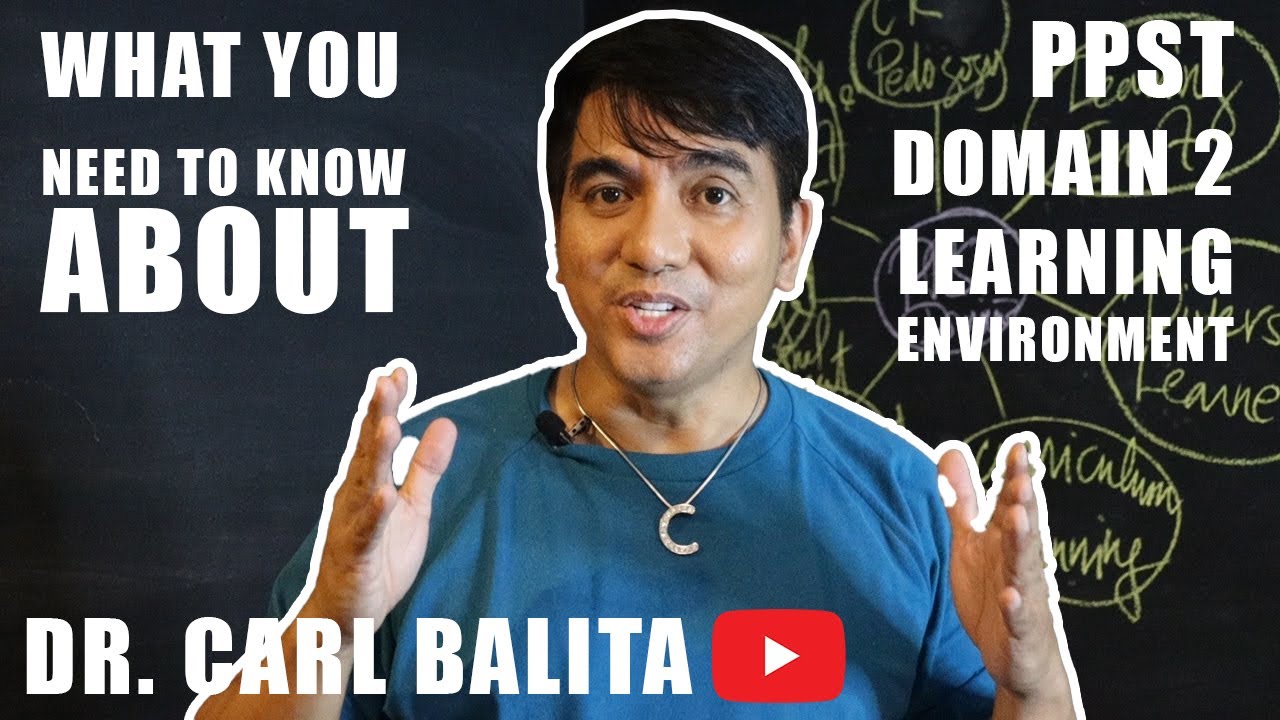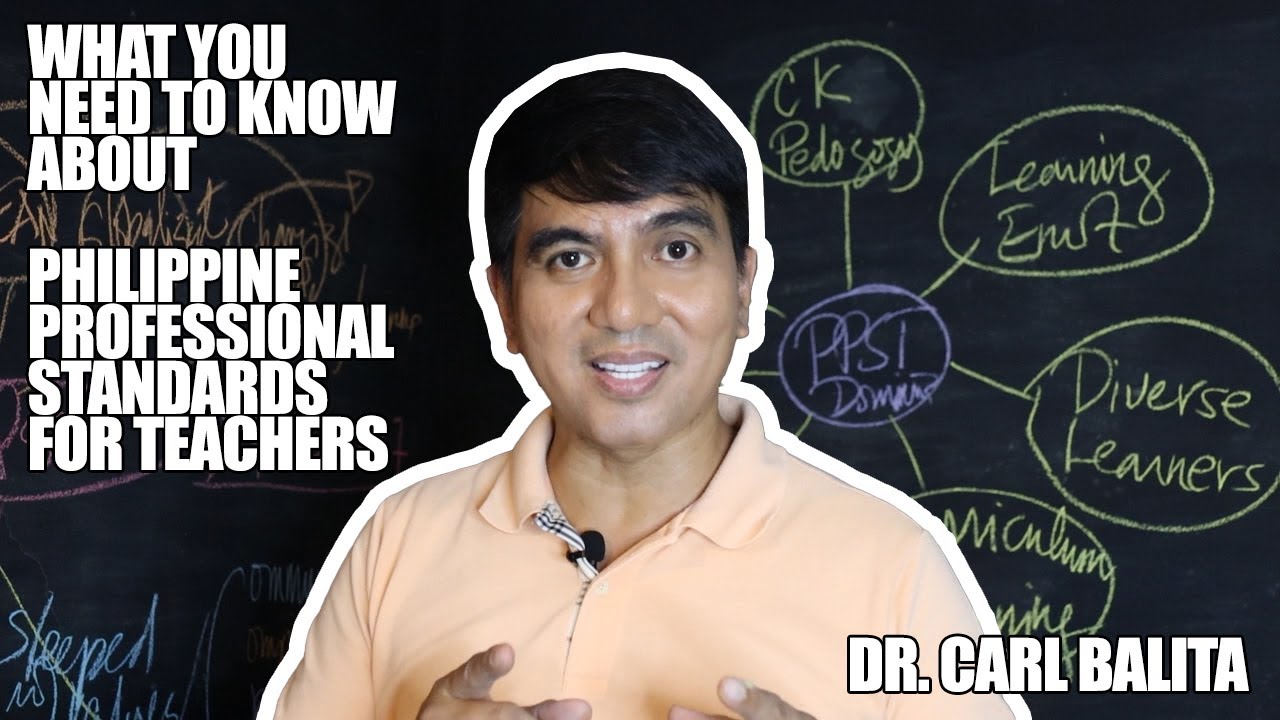PPST DOMAIN 4: CURRICULUM AND PLANNING | Dr Carl Balita
Summary
TLDRThe video discusses the fourth domain of the Philippine Professional Standards for Teachers, focusing on curriculum and planning. It emphasizes the importance of curriculum as the totality of a student's learning experiences, both inside and outside the classroom. The speaker explains how long-term educational goals are broken down into objectives, leading to measurable learning outcomes. Teachers play a critical role in designing structured and sequenced lessons that are contextually relevant, collaborative, and responsive to learners' needs. The ultimate goal is to create meaningful change in students through well-planned instruction, fostering knowledge, skills, attitudes, and values.
Takeaways
- 📚 Curriculum is the total experience of the learner, inside and outside the classroom, and includes structured, prescribed, and hidden elements.
- 🎯 The curriculum is based on long-term goals that need to be broken down into smaller, digestible objectives for effective learning.
- 🐘 Objectives are like breaking down an elephant into bite-sized pieces, making them easier for the child to process and learn.
- 🔄 Instruction is key in transforming curriculum content into relevant learning activities, which lead to measurable outcomes.
- ✨ The ultimate proof of learning is change, which is measurable and must align with competencies and values.
- 📏 Objectives should be SMART: Specific, Measurable, Attainable, Realistic, and Time-bound, to ensure effective learning outcomes.
- 🔧 The planning and design of lessons should be collaborative, involving vertical, horizontal, and spiral integration for structured and sequenced activities.
- 💡 Lesson plans are the teacher’s tools to deliver structured and sequenced learning activities, guiding students to achieve competencies.
- 🛠️ Resources like materials, manpower, time, and even money should be incorporated into the planning to enhance the learning experience.
- 🌟 The role of the teacher is to lead learners through an outcome-based education, fostering relevant changes one step at a time.
Q & A
What is the main focus of the fourth domain of the Philippine Professional Standards for Teachers (PPST)?
-The main focus of the fourth domain is on curriculum and planning, emphasizing the importance of curricular content, learning activities, and achieving learning outcomes in the classroom.
How is 'curriculum' defined in the context of the video transcript?
-Curriculum is defined as the sum total of all experiences that a child goes through, both inside and outside the classroom, which can be structured, prescribed, or hidden. It encompasses all experiences aimed at making the child a lifelong learner.
What role do goals play in curriculum planning according to the transcript?
-Goals serve as long-term targets that guide the curriculum content. They are broken down into specific, measurable objectives that are used to structure learning activities and assess outcomes.
What is the significance of objectives in the curriculum planning process?
-Objectives are derived from long-term goals and provide a clear focus for instruction. They are stated in specific, measurable, attainable, realistic, and time-bound (SMART) terms, making them essential for achieving desired learning outcomes.
How are learning activities related to curriculum content and objectives?
-Learning activities are designed based on curriculum content and aligned with specific objectives. They translate abstract curricular concepts into concrete experiences that are relevant and engaging for learners.
What is meant by 'outcome' in the context of curriculum planning?
-Outcome refers to the change that occurs in a learner as a result of instructional activities. It is the tangible proof of learning and is directly linked to the achievement of objectives and goals.
What does 'contextually relevant and responsive curriculum' mean?
-A contextually relevant curriculum ensures that learning is applicable to real-life situations and can be used by students beyond the classroom. It is responsive when it addresses the needs of society and prepares students to contribute meaningfully.
Why is collaboration emphasized in curriculum planning and design?
-Collaboration is important because it ensures that curriculum planning is comprehensive and incorporates multiple perspectives, leading to a cohesive and integrated learning experience. It also helps in aligning the curriculum vertically and horizontally across grade levels.
What are the key components of a structured and sequenced lesson plan mentioned in the transcript?
-The key components include objectives, subject matter, learning activities, evaluation methods, and assignments. These elements work together to create a clear and organized framework for delivering content and assessing student learning.
What resources are necessary for effective curriculum implementation according to the transcript?
-The necessary resources include materials, machines, human power (manpower), money, and time (moment). These resources support the learning experience and ensure that the curriculum is effectively delivered in the classroom.
Outlines

このセクションは有料ユーザー限定です。 アクセスするには、アップグレードをお願いします。
今すぐアップグレードMindmap

このセクションは有料ユーザー限定です。 アクセスするには、アップグレードをお願いします。
今すぐアップグレードKeywords

このセクションは有料ユーザー限定です。 アクセスするには、アップグレードをお願いします。
今すぐアップグレードHighlights

このセクションは有料ユーザー限定です。 アクセスするには、アップグレードをお願いします。
今すぐアップグレードTranscripts

このセクションは有料ユーザー限定です。 アクセスするには、アップグレードをお願いします。
今すぐアップグレード関連動画をさらに表示

PROF ED 5: CHAPTER 6 | Camille Kirong

PPST DOMAIN 2: LEARNING ENVIRONMENT | Dr Carl Balita

PPST DOMAIN 1: CONTENT KNOWLEDGE AND PEDAGOGY | Dr Carl Balita

PPST, Southeast Asia Teachers Competency Framework and Code of Ethics for a Professional Teacher

PPST: WHAT YOU NEED TO KNOW | Dr Carl Balita

OBSERVASI KINERJA KEPALA SEKOLAH ( MEMANDU PERENCANAAN PEMBELAJARAN )
5.0 / 5 (0 votes)
